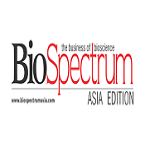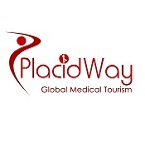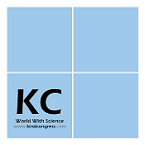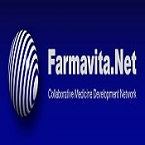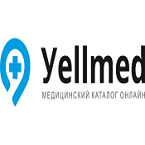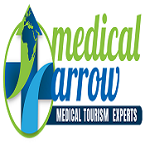About Conference
On behalf of ConferenceSeries it is our pride and privilege to invite all the participants from all around the world to attend “16th International Conference on Neurosurgery and Neuroscience’’ held during November 15-16, 2023 Barcelona, Spain which includes prompt keynote presentations, Oral talks, Poster presentations and Exhibitions.
Neurosurgery 2023 is an annual meeting which gathers Neurosurgeons as well as Neurology researchers to explore the future of the Neurosurgery and Neurological disorders which offers you to pay attention to distinct factors of new ideas and developments in Neurology and Neurosurgery to enhance public health and well-being.
Neurosurgery 2023 participants include professors, researchers, physicians, business delegates, scientists, students all over the world.
Significance and scope?
Nearly 90% of the world’s population, suffer from Neurological disorders, from Alzheimer and Parkinson disease, strokes, multiple sclerosis and epilepsy to migraine, brain injuries and neuroinfections, with some 6.8 million dying each year.
Who will attend?
Neurosurgery 2023 main aim is to bring Neurologists and Directors, Stroke Specialists, Neurology researchers, Neuroscientists, Specialists, Researchers, Professors, Industrial Experts, Neurosurgeons, Psychiatrist, Lecturers and Students and Neuroscience Therapists, Neurology organizations, societies and associations under a single roof.
We truly believe that Neurosurgery 2023 in Paris will be a highly rewarding event for everyone, which will help in health enhancement and quality of life.
Neurosurgery 2023 Highlights include:
Keynote sessions by world’s most eminent researchers
Meeting with eminent speakers from all around the world
Learning an Networking with Experts
Nominations for best posters
Certificates presentation
Young Scientist Benefits
-
Our conferences provide best Platform for your research through oral presentations.
-
Share the ideas with both eminent researchers and mentors.
-
Young Scientist Award reorganization certificate and memento to the winners
-
Young Scientists will get appropriate and timely information by this Forum.
-
Platform for collaboration among young researchers for better development
-
Award should motivate participants to strive to realize their full potential which could in turn be beneficial to the field as whole.
Scientific Sessions
Track 1: Neurology
Neurology is the study and treatment of nervous system disorders which consist of a complex system including its subdivisions. The autonomic and somatic nervous system, neurological disorders are the most dangerous threats to health. Diseases of nervous system include Alzheimer and Parkinson disease, strokes, multiple sclerosis and epilepsy to migraine, brain injuries. Nearly one in six of the world’s population up to 1 billion people, suffer from neurological disorders.
Track 2: Neurosurgery
Neurosurgery is surgical examination which deals with the neurological treatment of specific disorders related to brain, spinal cord, peripheral nerves, and extra-cranial cerebrovascular system is known as neurosurgery. Emergencies like intracranial hemorrhage and neuro trauma are basically involved in most of the neurosurgery. Some of the crucial types of neurosurgery includes vascular neurosurgery and endovascular neurosurgery, stereotactic neurosurgery, functional neurosurgery, and epilepsy surgery, brain tumor, oncological neurosurgery, skull base surgery, spinal neurosurgery, peripheral nerve surgery.
Track 3: Neuroscience
Neuroscience or Neural Science involves brain, spinal cord and nerves. Cellular Neuroscience and Molecular neuroscience involves the study of neurons at a cellular and molecular level. Clinical Neuroscience is a branch of neuroscience focusing on the diseases and disorders of the brain and central nervous system. Clinical neuroscience serves as a future of Psychiatry. Computational Neuroscience assists as a theoretical method for investigating the function and mechanism of the nervous system. It makes use of the essential features of the biological system at multiple spatial-temporal scales, from membrane currents, protein and chemical coupling to network oscillations and learning and memory.
Track 4: Neurological Disorder
Neurological brain Disorders are diseases of the brain, spine and the nerves that connect them. There are more than 600 diseases of the nervous system, such as brain tumors, epilepsy, Parkinson's disease and stroke as well as less familiar ones such as frontotemporal dementia. The peripheral nerves located deep under the skin can also be vulnerable to damage. Neurological disorders can affect an entire neurological pathway or a single neuron. Even a small disturbance to a neuron’s structural pathway can result in dysfunction. The World Health Organization reports that various types of neurological disorders affect millions of people around the world, including 24 million that suffer from Alzheimer’s disease and 326 million who experience migraines.
Track 5: Neuropathology
Neuropathology is the study of disease of nervous system, usually in the form of either small surgical biopsies or whole autopsies. Neuropathology is a subspecialty of anatomic pathology, neurology, and neurosurgery. Nerve disease may cause due to Vitamin deficiencies mainly B12 and other B vitamins, autoimmune neuropathy, infection, alcoholic neuropathy, toxins and poisons, tumors and trauma. The biopsy is usually requested after a mass is detected by radiologic imaging. The principal work of the neuropathologist is to examine biopsy tissue from the brain and spinal cord to aid in diagnosis of disease and other conditions that affect the central nervous system.
Track 6: Brain Tumor
Brain is one of the largest, most complex and sensitive organs made up of 100 billion nerves which communicate all over the body. Minute damage may cause serious consequences leading to several brain disorders such as Alzheimer's disease, dementias, brain cancer, epilepsy, seizures, mental disorders, Parkinson’s, stroke and Transient Ischemic Attack (TIA).
As we age brain diseases are highly susceptible. There are 10 million individuals in the UK living with a neurological condition which significantly affects their lives. Brain tumors are the second-leading cause of death.
Track 7: Cerebrovascular Disorder
Condition where blood vessel in the brain gets affected which results in cerebrovascular disorder. Restrictions in blood flow may occur from vessel narrowing, clot formation, blockage or blood vessel rupture, transient ischemic attack and vascular dementia are few types of cerebrovascular disorders.
Cerebrovascular Disorders are the most common life-threatening neurological event in the U.S. Intracranial atherosclerosis is responsible for approximately 40,000 of these attacks per year. There were an estimated 158,000 cerebrovascular-related deaths in 2003 and 139,000 of were age 65 and older.
Track 8: Spinal Surgery
It is a condition where disk in the spine is replaced with an artificial one between vertebrae which is known as disk replacement, placing U-shaped device between two vertebrae in lower back known as Interlaminar implant to eases pressure on your spinal nerves. Spinal fusion is the most common surgery for chronic nonspecific back pain. In 2019 $2.6 million spinal surgery market is expected with yearly growth rate of 5.1% increase in spinal surgery market is expected by 2020.
Track 9: Neurodegenerative Diseases
A neuron is a nerve cell that is the basic building block of the nervous system which includes brain and spinal cord. They cannot repair or renew themselves if once damaged. If they die then neurodegenerative diseases like Alzheimer’s disease, Parkinson disease, Lewy body dementia, frontotemporal dementia, amyotrophic lateral sclerosis, Huntington disease, and prion diseases occurs. Most of the neurodegenerative diseases are incurable.
Track 10: Central Nervous System
Central Nervous system plays major role in control of most body functions and connects the most important parts brain and spinal cord. The CNS is vulnerable to various disorders. trauma, infections like meningitis, encephalitis, polio, and epidural abscess, structural defects, tumors, blood flow disruption, autoimmune disorders etc… Approximately 20 million patients suffer from various forms of central nervous system disorder.
Track 11: Peripheral Nerve Injury
The peripheral nervous system comprises of a network of 43 pairs of motor and sensory nerves that connect the brain and spinal cord (the central nervous system) to the entire human body. Nerve injuries, brachial plexus injury, foot drop injury, spinal accessory nerve injury, traumatic nerve injury are certain massive peripheral nerve injury. Surgical risk factors like compressive dressings or casts, tourniquet inflation, hematoma or abscess formation promote such nervous injury.
Track 12: Endovascular Neurosurgery
Catheters and radiology are used to diagnose and treat various conditions and diseases of the central nervous system. Medication containing catheters is inserted through blood vessels for treatment of vascular diseases in a condition where open surgery is not required. Angiogram, Ankle-Brachial Index, Carotid Duplex, Computed Tomography Angiography (CTA) and Magnetic Resonance Angiography (MRA) and Duplex Ultrasound are instruments and tests performed for Endovascular Neurosurgery. Procedures of endovascular neurosurgery are endovascular coiling, minimally invasive spine surgery, cerebral angiography carotid artery angioplasty/stenting, Thrombolytic therapy.
Track 13: Neuroendocrinology
Study of nerves system and endocrine system is neuroendocrinology. They make hormones like cells of the endocrine system (endocrine cells). They receive messages from the nervous system and respond by making and releasing hormones. Hypothalamus plays major role in neuroendocrine function that maintains homeostasis, regulating reproduction, energy utilization, blood pressure etc.
Track 14: Advanced Neurosurgical Instruments
The demand for neurosurgical devices is expected to grow from USD 7.3 billion in 2019 to USD 13.5 billion in 2024, at a CAGR of 13.0% during the forecast period. The increasing prevalence of neurological diseases, efforts to develop the neuromodulation application basis of neuroendoscopic surgeries over traditional brain surgery are driving the growth of neurosurgical devices market
Track 15: Neuroimmunology
Study of nervous system is neuroscience and immunology is immune system. Neuroimmunologists seek to better understand the interactions of these two complex systems during development, homeostasis, and response to injuries. A long-term goal of this rapidly developing research area is to further develop our understanding of the pathology of certain neurological diseases, some of which have no clear cause. It contributes to development of new pharmacological treatments for several neurological conditions. Many types of interactions involve both the nervous and immune systems which include physical, chemical, and environmental stressors that affect the two systems on a daily basis.
Track 16: Neurology Nursing
People who suffer from brain and nervous system disorders are assisted by Neuroscience Nurse. Neurology nursing requires an understanding of normal nervous system anatomy and physiology, keen assessment and monitoring skills, vast knowledge about neurological disease and conditions, and on-going education related to recommended prevention methods and treatment options and has to manage conditions such as stroke, brain injuries, spinal cord injuries, epilepsy, multiple sclerosis, Parkinson’s disease, and encephalitis, to name a few., administering medication, and consulting physicians on patient progress are some of their duties.
These nursing professionals should have even knowledge about the diagnostic tests as well. CT scans and MRI’s are some of such tests. Neurological nurses also should have the idea of understanding how to read and interpret these tests as well.
Track 17: Neuro Pharmacology
Study which shows how drugs effects on nervous system. It has two branches Behavioural and molecular. Behavioural neuropharmacology focuses on the study of how drugs affect human behaviour and molecular neuropharmacology involves the study of neurons since both are concerned with the interactions of neurotransmitters, neuropeptides, neurohormones, neuromodulators, enzymes etc…Its overall goal is to develop drugs that have beneficial effects on neurological function.
Track 18: Brain Mapping & Biomarkers
The brain is the most complicated organ in our body. Every area has a specific function that controls everything that human body does. For years, doctors have had a rough map of the brain, but never to the degree that they could operate and know for sure how to avoid every critical portion since each person’s brain are unique, causing variations in the map. This fact, of sheer complexity of the brain, has challenged neurosurgeons for years. A biomarker is a characteristic that is objectively measured and evaluated as an indicator of normal biological processes, pharmacologic responses. Biomarkers for neurological diseases are difficult to difficult to diagnose, but better technology is making it easier for researchers to track brain health to earlier diagnosis, faster drug development and to bring more effective treatments.
Track 19: Neuro Chemistry and Neuro Toxicology
Neurochemistry is the study of chemicals, including neurotransmitters and other molecules such as psych pharmaceuticals and neuropeptides which control and influence the physiology of the nervous system. Neurotoxicology is a form of toxicity in which a biological, chemical, or physical agent produces an adverse effect on the structure or function of the central and/or peripheral nervous system. Neurotoxicity is known as ‘any form of substance-induced dysfunction of the nervous system’. Neurotoxicity can be studied from many different perspectives, including neurobehavioral, neurodevelopment, neurophysiology, neuropathology and neurochemistry.
Track 20: Advances in Neuroradiology and Neuroimaging Techniques
Rapid development of neuroscience techniques due to advancements in Neuroimaging methodology which include Voxel Based Morphometry (VBM), MRI, Magneto Encephalography (MEG), Optical imaging, Diffusion Tensor Imaging (DTI), Electroencephalography (EEG), and Positron Emission Tomography (PET).
Market Analysis
According to the latest survey conducted by WHO, it is revealed that Neurological Disorders encompassing Stroke, Alzheimer & Dementia, Epilepsy and many more accounts for more than 40% of deaths worldwide on an average and it is also predicted that the number of disability –adjusted life years vanished due to Neurological disorders are expected to accelerate from 95 million globally in 2015 to 107 million by 2024. Neurological disorder occurs approximately 152,000 times a year in the UK; that is stroke occurs every 3 minutes 27 seconds, where brain stroke plays vital criteria. First-time incidence of neurological disorder occurs almost 17 million times a year worldwide. There are over 1.2 million stroke survivors in the UK. Neurological disorder is the fourth single largest cause of death in the UK and second in the world. By the age of 75, 1 in 5 women and 1 in 6 men will have a Brain-stroke.
Neurosurgery involves the diagnosis and treatment of disorders that affect the nervous system including organs such as brain, peripheral nerves, spinal cord, and extra-cranial cerebrovascular system. Neurosurgery includes micro-vascular anastomosis, aneurysms clipping, spine surgery, microdiscectomy, artificial discs, laminectomy, craniopharyngiomas, endoscopic endonasal surgery, and stereotactic surgery. A range of surgical equipment, such as electrosurgical devices, forceps, and surgical sutures are used during the surgical treatment of neurological disorders.
Recent developments and product approvals in the field of minimally invasive surgical procedures for the treatment of diseases associated with nervous system stimulate the growth of this market. For instance, in October 2016 Lars Leksell Gamma Knife Center in the University Health System became the first in the state, and one of the first in the country, to attain Gamma Knife, a technology that enables completely noninvasive brain surgery.
The UK neurosurgery surgical equipment market was valued at $30 million in 2016, and is projected to reach $55 million by 2024, growing at a CAGR of 7.3% from 2016 to 2024. North America was the highest contributor to this market, with $35 million in 2016, and is anticipated to reach $63 million by 2024, registering a CAGR of 8.7%. Asia-Pacific is anticipated to reach $40 million by 2024 at a CAGR of 6.4%. North America and Europe segments collectively accounted for about 7.3% share of the neurosurgery surgical equipment market in 2016, with the former constituting around 6.5% share. Asia-Pacific and LAMEA segments are expected to witness significant growth rates at a CAGR of 6.7% and 7.5% respectively, during the forecast period. The cumulative share of these two segments was 7% in the neurosurgery surgical equipment market in 2016, and is anticipated to reach 8.4% by 2024.
Past Conference Report
Neurosurgery 2022
15th International Conference on Neurosurgery and Neuroscience was organized during November 21-22, 2022, Webinar. The conference was marked with the attendance of Editorial Board Members of supporting journals, Scientists, young and brilliant researchers, business delegates and talented student communities, who made this conference fruitful and productive.
This conference was based on the theme “Exploring current trends and challenges in Neurosurgery and Neuroscience” which included the following scientific tracks:
-
Neurology
-
Neurosurgery
-
Neuroscience
-
Neurological Disorder
-
Neuropathology
-
Brain Tumor
-
Cerebrovascular Disorder
-
Spinal Surgery
-
Neurodegenerative Diseases
-
Central Nervous System
-
Peripheral Nerve Injury
-
Endovascular Neurosurgery
-
Neuroendocrinology
-
Advanced Neurosurgical Instruments
-
Neuroimmunology
-
Neurology Nursing
-
Neuro Pharmacology
-
Brain Mapping & Biomarkers
-
Neuro Chemistry and Neuro Toxicology
-
Advances in Neuroradiology and Neuroimaging Techniques
-
Neurological Rehabilitation
-
Clinical Trails and Recent Advancements
-
Case Reports of Neurology and Neurosurgery
Conference Series LLC Ltd has taken the privilege of felicitating Neurosurgery 2022 Organizing Committee, Editorial Board Members and Keynote Speakers who supported for the success of this conference.
The esteemed guests, keynote speakers and researchers shared their innovative research and vast experience through their informative presentations at the podium of Neurosurgery 2022. We are glad to inform that all accepted abstracts for the conference have been published in International Journal of Clinical Neurology and Neurosurgery and Journal of Neurological Disorders.
Past Reports Gallery





